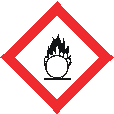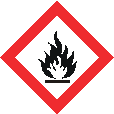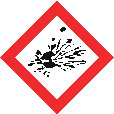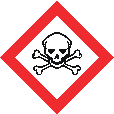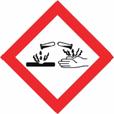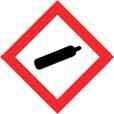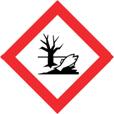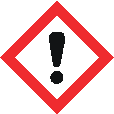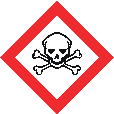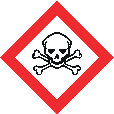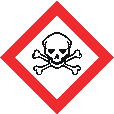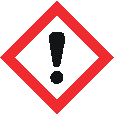Technician Regulation and Safety Training
***NOTE -- To fully comply with OSHA Hazmat Communication requirements, your employer must provide on-site information concerning the types of chemicals you might be exposed to and the location of the Safety Data Sheets (formerly MSDS) in conjunction with this class. If you have any questions at any time during this program, you should direct them to your employer.
Label and MSDS Changes
GHS - Globally Harmonized
System of Classification
and Labeling of Chemicals
This information has been taken directly from the Department of Labor's, Occupational Safety and Health Administration (OSHA's) web site at http://www.osha.gov/dsg/hazcom/ghs.html.
The GHS is an acronym for The Globally Harmonized System of Classification and Labeling of Chemicals. The GHS is a system for standardizing and harmonizing the classification and labeling of chemicals - worldwide. It is a logical and comprehensive approach to:
-
Defining health, physical and environmental hazards of chemicals;
-
Creating classification processes that use available data on chemicals for comparison with the defined hazard criteria; and
-
Communicating hazard information, as well as protective measures, on labels and Safety Data Sheets (SDS)..
Many countries already have regulatory systems in place for these types of requirements. These systems may be similar in content and approach, but their differences are significant enough to require multiple classifications, labels and safety data sheets for the same product when marketed in different countries, or even in the same country when parts of the life cycle are covered by different regulatory authorities.
This leads to inconsistent protection for those potentially exposed to the chemicals, as well as creating extensive regulatory burdens on companies producing chemicals. For example, in the United States (U.S.) alone, there are requirements for classification and labeling of chemicals in place for the Consumer Product Safety Commission, the Department of Transportation, the Environmental Protection Agency, and the Occupational Safety and Health Administration.
The GHS itself is not a regulation or a standard. The GHS Document establishes agreed upon hazard classification and communication provisions with explanatory information on how to apply the system. The elements in the GHS supply a mechanism to meet the basic requirement of any hazard communication system, which is to decide if the chemical product produced and/or supplied is hazardous and to prepare a label and/or Safety Data Sheet as appropriate.
Regulatory authorities in countries adopting the GHS will thus take the agreed criteria and provisions, and implement them through their own regulatory process and procedures rather than simply incorporating the text of the GHS into their national requirements.
The GHS Document thus provides countries with the regulatory building blocks to develop or modify existing national programs that address classification of hazards and transmittal of information about those hazards and associated protective measures.
This helps to ensure the safe use of chemicals as they move through the product life cycle from "cradle to grave."
Implementation and Training requirements
You, as an employee, are probably attending this training because your employer is required to communicate hazard information to you in order to comply with OSHA Hazard Communication regulations. OSHA has mandated that all employees must receive training on the new Globally Harmonized System (GHS) by December 1, 2013. This is because you are likely to begin seeing chemical products in the marketplace that comply with this new standard.
If you do not understand what the chemical labels and/or the Safety Data Sheets (SDS) - [which are going to be replacing Material Safety Data Sheets (MSDS)] - are indicating to you, you need to discuss the situation with your supervisor.
The Hazard Communication Standard in 1983 gave the workers the 'right to know', but the new Globally Harmonized System gives workers the ‘right to understand'.
This Fact sheet (http://www.osha.gov/dsg/hazcom/HCSFactsheet.html) discussed OSHA's implementation plan. New changes to the Occupational Safety and Health Administration's (OSHA) Hazard Communication Standard are bringing the United States into alignment with the Globally Harmonized System of Classification and Labeling of Chemicals (GHS), further improving safety and health protections for America's workers.
Building on the success of OSHA's current Hazard Communication Standard, the GHS is expected to prevent injuries and illnesses, save lives and improve trade conditions for chemical manufacturers.
The new hazard communication standard still requires chemical manufacturers and importers to evaluate the chemicals they produce or import and provide hazard information to employers and workers by putting labels on containers and preparing safety data sheets.
However, the old standard allowed chemical manufacturers and importers to convey hazard information on labels and material safety data sheets in whatever format they chose. The modified standard provides a single set of harmonized criteria for classifying chemicals according to their health and physical hazards and specifies hazard communication elements for labeling and safety data sheets - everything you'll need to know will be presented to you in the same manner on labels and in the same locations on safety data sheets.
Benefits: The new standard covers over 43 million workers who produce or handle hazardous chemicals in more than five million workplaces across the country. The modification is expected to prevent over 500 workplace injuries and illnesses and 43 fatalities annually. Once fully implemented it will also:
- Enhance worker comprehension of hazards, especially for low and limited-literacy workers, reduce confusion in the workplace, facilitate safety training, and result in safer handling and use of chemicals;
- Provide workers quicker and more efficient access to information on the safety data sheets;
- Result in cost savings to American businesses of more than $475 million in productivity improvements, fewer safety data sheet and label updates and simpler new hazard communication training; and
- Reduce trade barriers by harmonizing with systems around the world.
These are the MAJOR changes to the Hazard Communication Standard:
- Hazard classification: Chemical manufacturers and importers are required to determine the hazards of the chemicals they produce or import. Hazard classification under the new, updated standard provides specific criteria to address health and physical hazards as well as classification of chemical mixtures.
- Labels: Chemical manufacturers and importers must provide a label that includes a signal word, pictogram, hazard statement, and precautionary statement for each hazard class and category.
- Safety Data Sheets: The new format requires 16 specific sections, ensuring consistency in presentation of important protection information.
- Information and training: To facilitate understanding of the new system, the new standard requires that workers be trained by December 1, 2013 on the new label elements and safety data sheet format, in addition to the current training requirements.
What will need to done and when:
Chemical users: Continue to update safety data sheets when new ones become available, provide training on the new label elements and update hazard communication programs if new hazards are identified.
Chemical Producers: Review hazard information for all chemicals produced or imported, classify chemicals according to the new classification criteria, and update labels and safety data sheets.
Effective |
Requirement(s) |
Who |
December 1, 2013 |
Train employees on the new label elements and SDS format. |
Employers |
June 1, 2015 December 1, 2015 |
Comply with all modified provisions of this final rule, except: Distributors may ship products labeled by manufacturers under the old system until December 1, 2015. |
Chemical manufacturers, importers, distributors and employers |
June 1, 2016 |
Update alternative workplace labeling and hazard communication program as necessary, and provide additional employee training for newly identified physical or health hazards. |
Employers |
Transition Period |
Comply with either 29 CFR 1910.1200 (this final standard), or the current standard, or both. |
All chemical manufacturers, importers, distributors and employers |
* This date coincides with the European Union implementation date for classification of mixtures.
The Department of Transportation (DOT), Environmental Protection Agency, and the Consumer Product Safety Commission actively participated in developing the GHS. DOT has already modified its requirements for classification and labeling to make them consistent with United Nations transport requirements and the new globally harmonized system.
Global implementation: The new system is being implemented throughout the world by countries including Canada, the European Union, China, Australia, and Japan.
Additional information: More information on the hazard communication standard, including the link to the Federal Register notice, can be found on OSHA's hazard communication safety and health topics page at www.osha.gov/dsg/hazcom/index.html.
Q. Why must training be conducted prior to the compliance effective date?
A. OSHA is requiring that employees are trained on the new label elements (i.e., pictograms, hazard statements, precautionary statements, and signal words) and SDS format by December 1, 2013, while full compliance with the final rule will begin in 2015. OSHA believes that American workplaces will soon begin to receive labels and SDSs that are consistent with the GHS, since many American and foreign chemical manufacturers have already begun to produce HazCom 2012/GHS-compliant labels and SDSs. It is important to ensure that when employees begin to see the new labels and SDSs in their workplaces, they will be familiar with them, understand how to use them, and access the information effectively.
What are the GHS label elements?
Some GHS label elements have been standardized (identical with no variation) and are directly related to the endpoints and hazard level. Other label elements are harmonized with common definitions and/or principles. See Figure 4.8 (below) for an illustration of the GHS label elements. This "QuickCard" is available at http://www.osha.gov./Publications/HazComm_QuickCard_Labels.html.
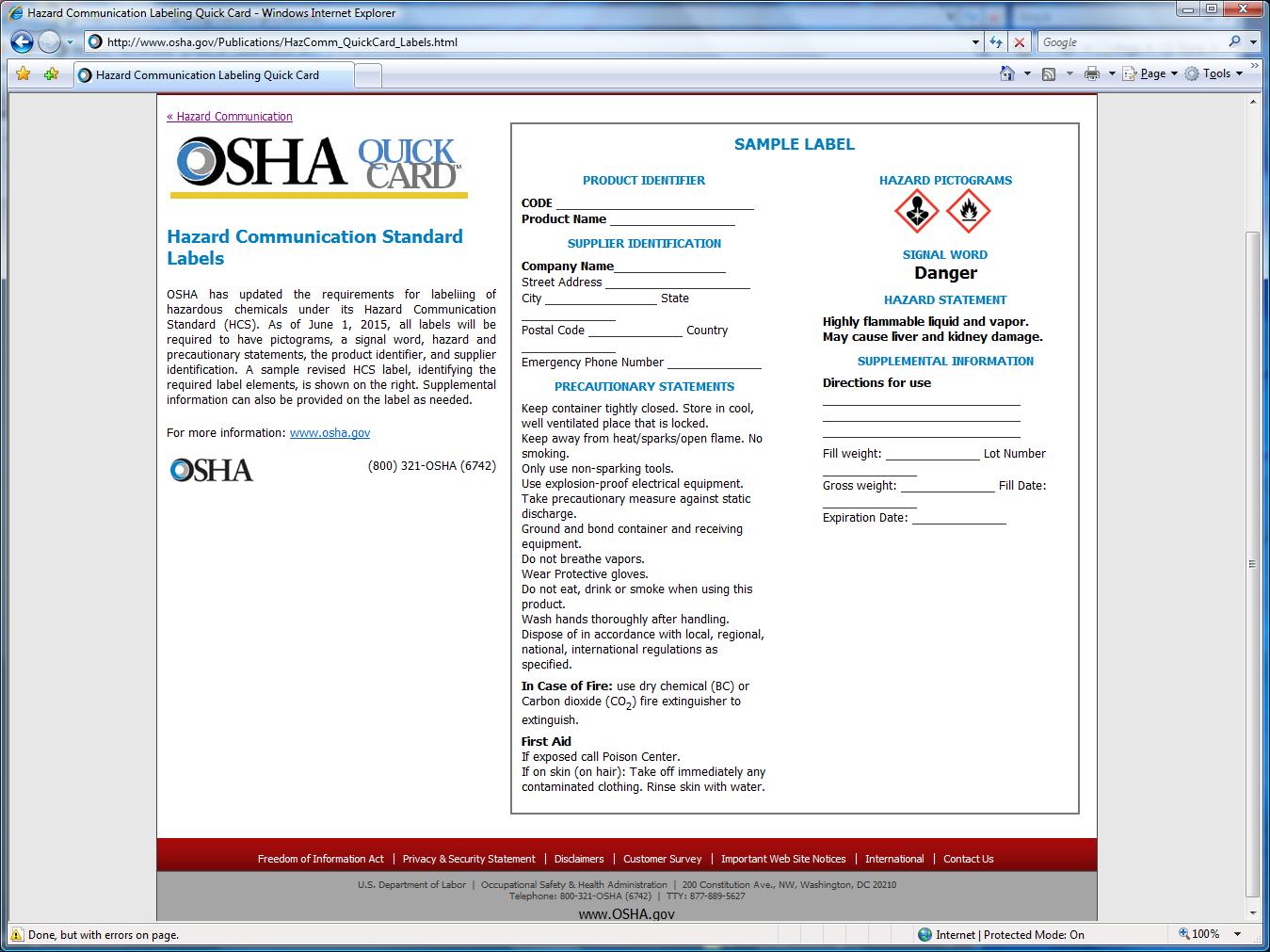
The standardized label elements included in the GHS are:
- Symbols (hazard pictograms): Convey health, physical and environmental hazard information, assigned to a GHS hazard class and category.
- Signal Words: "Danger" or "Warning" are used to emphasize hazards and indicate the relative level of severity of the hazard, assigned to a GHS hazard class and category.
- Hazard Statements: Standard phrases assigned to a hazard class and category that describe the nature of the hazard. The symbols, signal words, and hazard statements have all been standardized and assigned to specific hazard categories and classes, as appropriate.
This approach makes it easier for countries to implement the system and should make it easier for companies to comply with regulations based on the GHS. The prescribed symbols, signal words, and hazard statements can be readily selected from Annex 1 of the "GHS Purple Book" (The actual regulations). These standardized elements are not subject to variation, and should appear on the GHS label as indicated in the GHS for each hazard category/class in the system.
The use of symbols, signal words or hazard statements other than those that have been assigned to each of the GHS hazards would be contrary to harmonization. This means you should NOT see any symbols, signal words or hazard statements - except for the approved ones.
Symbols/Pictograms
The GHS symbols have been incorporated into pictograms for use on the GHS label. Pictograms (Table 4.9) include the harmonized hazard symbols plus other graphic elements, such as borders, background patterns or colors which are intended to convey specific information.
For other sectors, such as transportation, pictograms will have a black symbol on a white background with a red diamond frame (see below). A black frame may be used for shipments within one country. Where a transport pictogram appears, the GHS pictogram for the same hazard should not appear.
Table 4.9
GHS Pictograms and Hazard Classes |
||
|
|
|
|
|
|
|
|
|
|
|
|
|
|
|
|
|
|
As you can see, these symbols consolidate several different kinds of hazards into a single representation. For example, this symbol
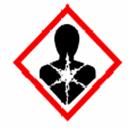
can indicate the product is a carcinogen; or a respiratory sensitizer; or has reproductive or specific "target organ" toxicity; mutagenicity or aspiration toxicity. This symbol could mean one, two or all of these TYPES of hazards. You should take time to become familar with these symbols.
For transport, pictograms will have the background, symbol and colors currently used in the UN Recommendations on the Transport of Dangerous Goods, Model Regulations shown in Table 4.10.
Table 4.10
Transport "Pictograms" |
||
|
|
|
Flammable Liquid Flammable Gas Flammable Aerosol |
Flammable solid Self-Reactive Substances |
Pyrophorics (Spontaneously Combustible) Self-Heating Substances |
|
|
|
Substances, which in contact with water, emit flammable gases (Dangerous When Wet) |
Oxidizing Gases Oxidizing Liquids Oxidizing Solids |
Explosive Divisions 1.1, 1.2, 1.3 |
|
|
|
Explosive Division 1.4 |
Explosive Division 1.5 |
Explosive Division 1.6 |
|
|
|
Compressed Gases |
Acute Toxicity (Poison): Oral, Dermal, Inhalation |
Corrosive |
|
|
|
Marine Pollutant |
Organic Peroxides |
|
You should only see the transportation symbols on the outside of cases or cartons of products - you will NOT see them on any of the products themselves UNLESS THE PRODUCT SHIPS IN AN ACCEPTED CONTAINER (such as a 55 gallon drum or gas cylinder). It is still a good idea to be familiar with these symbols.
Signal Words
The signal word will indicate the relative degree of severity a hazard. The signal words used in the GHS are:
- "Danger" for the more severe hazards, and
- "Warning" for the less severe hazards.
NOTE: THERE IS NO “CAUTION” CATEGORY -
Signal words are standardized and assigned to the hazard categories within endpoints. Some products with lower level hazard categories WILL NOT HAVE signal words. The label will carry the signal word corresponding to the most severe hazard class of the product.
Hazard Statements
Hazard statements are standardized and assigned phrases that describe the hazard(s) as determined by hazard classification. An appropriate statement for each GHS hazard should be included on the label for products possessing more than one hazard. This means that a product "could" have several hazard statements - so read the ENTIRE label.
The assigned label elements are provided in each hazard chapter as well as in the Annexes 1 & 2 of the GHS Purple Book. Figure 4-11 illustrates the assignment of standardized GHS label elements for the acute oral toxicity categories.
Figure 4.11
ACUTE ORAL TOXICITY - Annex 1 |
|||||
|
Category 1 |
Category 2 |
Category 3 |
Category 4 |
Category 5 |
LD50 |
£ 5 mg/kg |
> 5 < 50 mg/kg |
³ 50 < 300 mg/kg |
³ 300 < 2000 mg/kg |
³ 2000 < 5000 mg/kg |
Pictogram |
|
|
|
|
No symbol |
Signal word |
Danger |
Danger |
Danger |
Warning |
Warning |
Hazard statement |
Fatal if swallowed |
Fatal if swallowed |
Toxic if swallowed |
Harmful if swallowed |
May be harmful if swallowed |
Other GHS label elements include:
Precautionary Statements and Pictograms: Measures to minimize or prevent adverse effects.
Precautionary information supplements the hazard information by briefly providing measures to be taken to minimize or prevent adverse effects from physical, health or environmental hazards. First aid is included in precautionary information. The GHS label should include appropriate precautionary information. Annex 3 of the GHS Purple Book includes precautionary statements and pictograms that can be used on labels.
Annex 3 also includes four types of precautionary statements covering: 1) prevention; 2) response in cases of accidental spillage or exposure; 3) storage; and 4) disposal. The precautionary statements have been linked to each GHS hazard statement and type of hazard. The goal is to promote consistent use of precautionary statements. Annex 3 is guidance and is expected to be further refined and developed over time.
Product Identifier (ingredient disclosure): Name or number used for a hazardous product on a label or in the SDS.
A product identifier should be used on a GHS label and it should match the product identifier used on the SDS. Where a substance or mixture is covered by the UN Model Regulations on the Transport of Dangerous Goods, the UN proper shipping name should also be used on the package.
The GHS label for a substance should include the chemical identity of the substance (name as determined by IUPAC, ISO, CAS or technical name). For mixtures/alloys, the label should include the chemical identities of all ingredients that contribute to ALL GHS hazards, such as, acute toxicity, skin corrosion or serious eye damage, germ cell mutagenicity, carcinogenicity, reproductive toxicity, skin or respiratory sensitization, or Target Organ Systemic Toxicity (TOST), when these hazards appear on the label.
Where a product is supplied exclusively for workplace use, the Competent Authority may give suppliers discretion to include chemical identities on the SDS, in lieu of including them on labels. The Competent Authority rules for confidential business information (CBI) take priority over the rules for product identification.
Supplier identification: The name, address and telephone number should be provided on the label.
The name, address and telephone number of the manufacturer or supplier of the product should be provided on the label.
Supplemental information: non-harmonized information. This can be ANY information that the manufacturer might want to "volunteer" - it is NOT required by regulations.
Supplemental label information is non-harmonized information on the container of a hazardous product that is not required or specified under the GHS.
In some cases this information may be required by a Competent Authority or it may be additional information provided at the discretion of the manufacturer/distributor.
The GHS provides guidance to ensure that supplemental information does not lead to wide variation in information or undermine the GHS information.
Supplemental information may be used to provide further detail that does not contradict or cast doubt on the validity of the standardized hazard information. It also may be used to provide information about hazards not yet incorporated into the GHS.
The labeler should have the option of providing supplementary information related to the hazard, such as physical state or route of exposure, with the hazard statement.
How are multiple hazards handled on labels?
Where a substance or mixture presents more than one GHS hazard, there is a GHS precedence scheme for pictograms and signal words. For substances and mixtures covered by the UN Recommendations on the Transport of Dangerous Goods, Model Regulations, the precedence of symbols for physical hazards should follow the rules of the UN Model Regulations.
For health hazards the following principles of precedence apply for symbols:
(a) if the skull and crossbones applies, the exclamation mark should not appear;
(b) if the corrosive symbol applies, the exclamation mark should not appear where it is used for skin or eye irritation;
(c) if the health hazard symbol appears for respiratory sensitization, the exclamation mark should not appear where it is used for skin sensitization or for skin or eye irritation.
For signal words:
(a) If the signal word 'Danger' applies, the signal word 'Warning' should not appear.
For hazard statements:
(a) All assigned hazard statements should appear on the label. The Competent Authority may choose to specify the order in which they appear.
Is there a specific GHS label format / layout?
The GHS hazard pictograms, signal word and hazard statements should be located together on the label. The actual label format or layout is not specified in the GHS. National authorities may choose to specify where information should appear on the label or allow supplier discretion.
Figure 4.12 shows an example of a GHS label for the fictional product 'ToxiFlam'. The core GHS label elements are expected to replace the need for the array of different labels.
Figure 4.12 Example GHS Inner Container Label (e.g., bottle inside a shipping box)
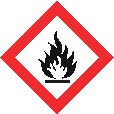 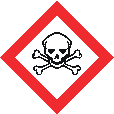 ToxiFlam (Contains: XYZ) ToxiFlam (Contains: XYZ) Danger! Toxic If Swallowed, Flammable Liquid and Vapor Do not eat, drink or use tobacco when using this product. Wash hands thoroughly after handling. Keep container tightly closed. Keep away from heat/sparks/open flame. - No smoking. Wear protective gloves and eye/face protection. Ground container and receiving equipment. Use explosion-proof electrical equipment. Take precautionary measures against static discharge. Use only non-sparking tools. Store in cool/well-ventilated place. IF SWALLOWED: Immediately call a POISON CONTROL CENTER or doctor/physician. Rinse mouth. In case of fire, use water fog, dry chemical, CO2, or "alcohol" foam. See Material Safety Data Sheet for further details regarding safe use of this product. MyCompany, MyStreet, MyTown NJ 00000, Tel: 444 999 9999 |
There has been discussion about the size of GHS pictograms and that a GHS pictogram might be confused with a transport pictogram or "diamond". Transport pictograms are different in appearance than the GHS pictograms.
The Purple Book explains how the GHS pictograms are expected to be proportional to the size of the label text. So that generally the GHS pictograms would be smaller than the transport pictograms.
Several arrangements for GHS labels are also provided in Annex 7 of the Purple Book. Figure 4.13 shows an arrangement for a combination packaging with an outer shipping box and inner bottles. The shipping box has a transportation pictogram. The inner bottles have a GHS label with a GHS pictogram.
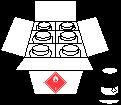
Figure 4.13 Combination Packaging (Outer transport box with inner bottles)
For a container such as a 55 gallon drum, the transport required markings and pictograms may be combined with the GHS label elements or presented separately. In Figure 4.14 a label arrangement for a single packaging such as a 55 gallon drum is shown. Pictograms and markings required by the transport regulations as well as GHS label and non-duplicative GHS pictogram are shown on the drum.
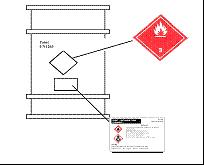
Figure 4.14 Combination Packaging (Container is transport package)
A label merging the transportation requirements and the GHS requirements into one label for the fictional product "ToxiFlam" is shown in Figure 4.15. This combined type label could be used on a 55 gallon drum, for example.
Figure 4.15 Example GHS Outer Container Label (55 gallon/200 liter drum)
|
|||||||
Are workplace containers covered in the GHS ?
Products falling within the scope of the GHS will carry the GHS label at the point where they are supplied to the workplace by a manufacturer or distributor, and that label should be maintained on the supplied container in the workplace.
The GHS label or label elements can also be used for workplace containers (e.g., storage tanks). However, the Competent Authority can allow employers to use alternative means of giving workers the same information in a different written or displayed format when such a format is more appropriate to the workplace and communicates the information as effectively as the GHS label.
For example, label information could be displayed in the work area on a large poster in proximity to the product, rather than on the individual containers. Some examples of workplace situations where chemicals may be transferred from supplier containers include: containers for laboratory testing, storage vessels, piping or process reaction systems or temporary containers where the chemical will be used by one worker within a short timeframe.
What is the GHS Safety Data Sheet (SDS)?
The GHS Safety Data Sheet (SDS) will replace the current "material safety data sheet" (MSDS) and will provide comprehensive information for use in workplace chemical management. Employers and workers will use the SDS as sources of information about hazards and to obtain advice on safety precautions.
The SDS is product related and, usually, is not able to provide information that is specific for any given workplace where the product may be used. However, the SDS information enables the employer to develop an active program of worker protection measures, including training, which is specific to the individual workplace and to consider any measures that may be necessary to protect the environment.
Information in a SDS also provides a source of information for other target audiences such as those involved with the transport of dangerous goods, emergency responders, poison centers, those involved with the professional use of pesticides and consumers. This OSHA QuickCard is available at: http://www.osha.gov/Publications/OSHA3493QuickCardSafetyDataSheet.pdf.
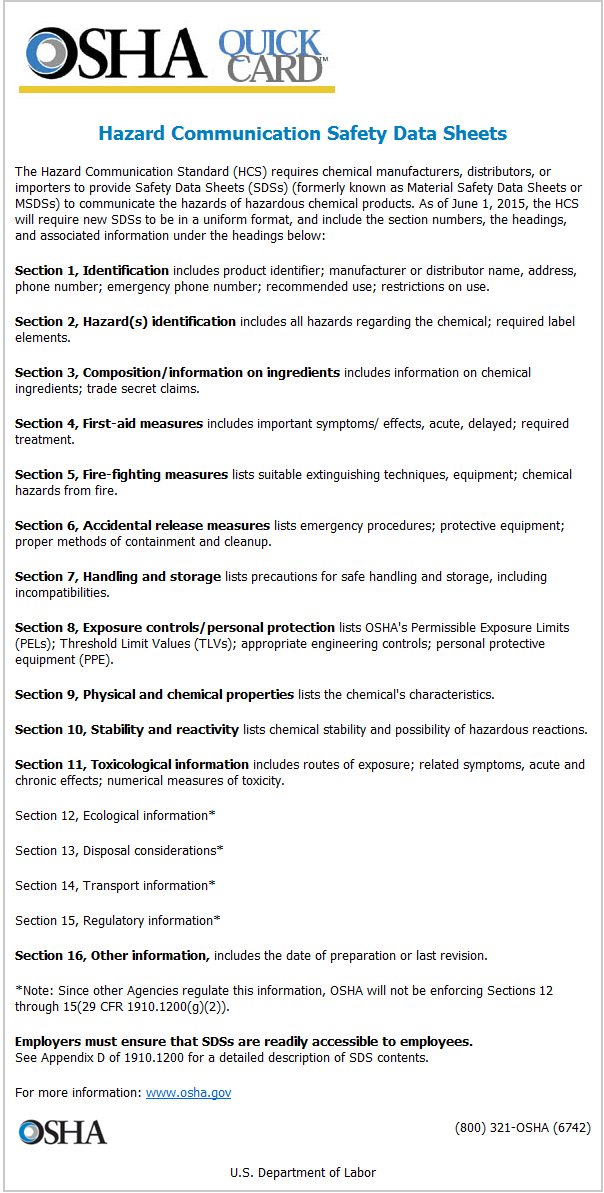
The SDS should contain 16 headings (Figure 4.14). The GHS MSDS headings, sequence and content are similar to the ISO, EU and ANSI MSDS/SDS requirements, except that the order of sections 2 and 3 have been reversed.
The SDS should provide a clear description of the data used to identify the hazards. Figure 4.14 and the GHS Purple Book provide the minimum information that is required in each section of the SDS. An example of a draft GHS SDS is provided below. The guidance document provides examples in Appendix B.
Figure 4.14
Minimum information for an SDS
|
1. |
Identification of the substance or mixture and of the supplier |
|
2. |
Hazards identification |
|
3. |
Composition/information on ingredients |
Substance
Mixture
NOTE: For information on ingredients, the competent authority rules for CBI take priority over the rules for product identification. |
4. |
First aid measures |
|
5. |
Firefighting measures |
|
6. |
Accidental release measures |
|
7. |
Handling and storage |
|
8. |
Exposure controls/personal protection. |
|
9. |
Physical and chemical properties |
|
10. |
Stability and reactivity |
|
11. |
Toxicological information |
Concise but complete and comprehensible description of the various toxicological (health) effects and the available data used to identify those effects, including:
|
12. |
Ecological information |
|
13. |
Disposal considerations |
|
14. |
Transport information |
|
15. |
Regulatory information |
|
16. |
Other information including information on preparation and revision of the SDS |
|
Q. How is the Safety Data Sheet (SDS) changing under the revised Hazard Communication Standard?
A. The information required on the safety data sheet (SDS) will remain essentially the same as that in the current standard. The current/former Hazard Communication Standard (HCS) indicated what information has to be included on an SDS but did not specify a format for presentation or order of information. The new/revised HCS requires that the information on the SDS be presented using consistent headings in a specified sequence.
Paragraph (g) of the final rule indicates the headings of information to be included on the SDS and the order in which they are to be provided. In addition, Appendix D indicates what information is to be included under each heading. The SDS format is the same as the ANSI standard format which is widely used in the U.S. and is already familiar to many employees.
The format of the 16-section SDS should include the following sections:
Section 1. Identification
Section 2. Hazard(s) identification
Section 3. Composition/information on ingredients
Section 4. First-Aid measures
Section 5. Fire-fighting measures
Section 6. Accidental release measures
Section 7. Handling and storage
Section 8. Exposure controls/personal protection
Section 9. Physical and chemical properties
Section 10. Stability and reactivity
Section 11. Toxicological information
Section 12. Ecological information
Section 13. Disposal considerations
Section 14. Transport information
Section 15. Regulatory information
Section 16. Other information, including date of preparation or last revision
Sections 12-15 is considered "supplemental information" and may be included in the SDS, but are not required by OSHA.
DETAILED DISCUSSION of differences ---
What is the difference between the GHS SDS and existing MSDSs/SDSs?
SDSs are in use globally. So it is useful to have an understanding of the similarities and differences in the existing MSDS/SDS content and format and the GHS SDS content and format. A table comparing MSDS/SDS content/format is provided below.
Comparison of MSDS/SDS Elements
The following tables provide a comparison of MSDS elements for the following:
- Globally Harmonized System
- 1 ISO Safety Data Sheet for Chemical Products 11014-1: 2003 DRAFT
- 2 ANSI MSDS Preparation Z400.1- 2004
- 3 OSHA Hazard Communication Standard 29#CFR#1910.12004
MSDS Comparison |
||||
MSDS Sections |
GHS SDS *1 |
ISO MSDS *2 |
ANSI MSDS *3 |
OSHA MSDS *4 |
1. Product and company identification |
|
|
|
|
2. Hazards identification |
|
|
|
|
3. Composition/ |
Substance
Mixture
Note: For information on ingredients, the competent authority rules for CBI take priority over the rules for product identification |
Substance
Mixture
|
|
|
4. First-aid measures |
|
|
|
|
5. Firefighting measures |
|
|
|
|
6. Accidental release measures |
|
|
|
|
7. Handling and storage |
|
|
handling
storage
|
|
8. Exposure controls/personal protection |
|
|
|
|
9. Physical and chemical properties |
|
|
|
|
10. Stability and reactivity |
|
|
|
|
11. Toxicological information |
|
|
|
|
12. Ecological information |
|
|
|
|
13. Disposal considerations |
|
|
|
|
14. Transport information |
|
|
|
|
15. Regulatory information |
|
|
|
|
16. Other information |
|
|
|
|
*1. Globally Harmonized System of Classification and Labeling of Chemicals (GHS), United Nations, 2005.
*2. ISO 11014-1:2003 DRAFT Safety Data Sheet for Chemical Products.
*3. American National Standard for Hazardous Industrial Chemicals-MSDS Preparation (ANSI Z-400.1-2004).
*4. U.S. DOL, OSHA, 29 CFR 1910.1200, HAZCOM.
So, we can now review a fictional product SDS to get a "feel" for how the new Safety Data Sheets (replacing the MSDS) will appear.
Example SDS for fictional product |
|||||||||||||||||||||||||||||||||||||||||||||||||||||||||||||||||||||
Bondit
|
|||||||||||||||||||||||||||||||||||||||||||||||||||||||||||||||||||||
In reality, there is not much difference. The product still lists the warnings and precautions prominently, so that workers will know what effects the products might have and what safety equipment is needed to properly protect themselves and use the materials.
Your employer is required to have a “hazmat” communication plan in place to comply with OSHA regulations.
The basic goal of an effective hazard communication program is to ensure employers and employees know the identities and hazards of chemicals in their workplaces. When employers and employees have such information, it can be used to design and implement appropriate protective measures to reduce the incidence of adverse effects.
OSHA's Hazard Communication Standard (HCS) is designed to ensure that information about these hazards and associated protective measures is disseminated.
This is accomplished by requiring chemical manufacturers and importers to evaluate the hazards of the chemicals they produce or import, and to provide information about them through labels on shipped containers and more detailed information sheets called safety data sheets (SDSs).
All employers with hazardous chemicals in their workplaces must prepare and implement a written hazard communication program, and must ensure that all containers are labeled, employees are provided access to SDSs, and an effective training program is conducted for all potentially exposed employees.
The employees need to provide their full attention during these training sessions so you understand your employers' protective programs and take steps to protect themselves.
Your job duties might include participating in the program. Your responsibilities might be to review and update the SDS for the products that you handle and report the change to your employer or to hold additional training classes to inform your co-workers.

